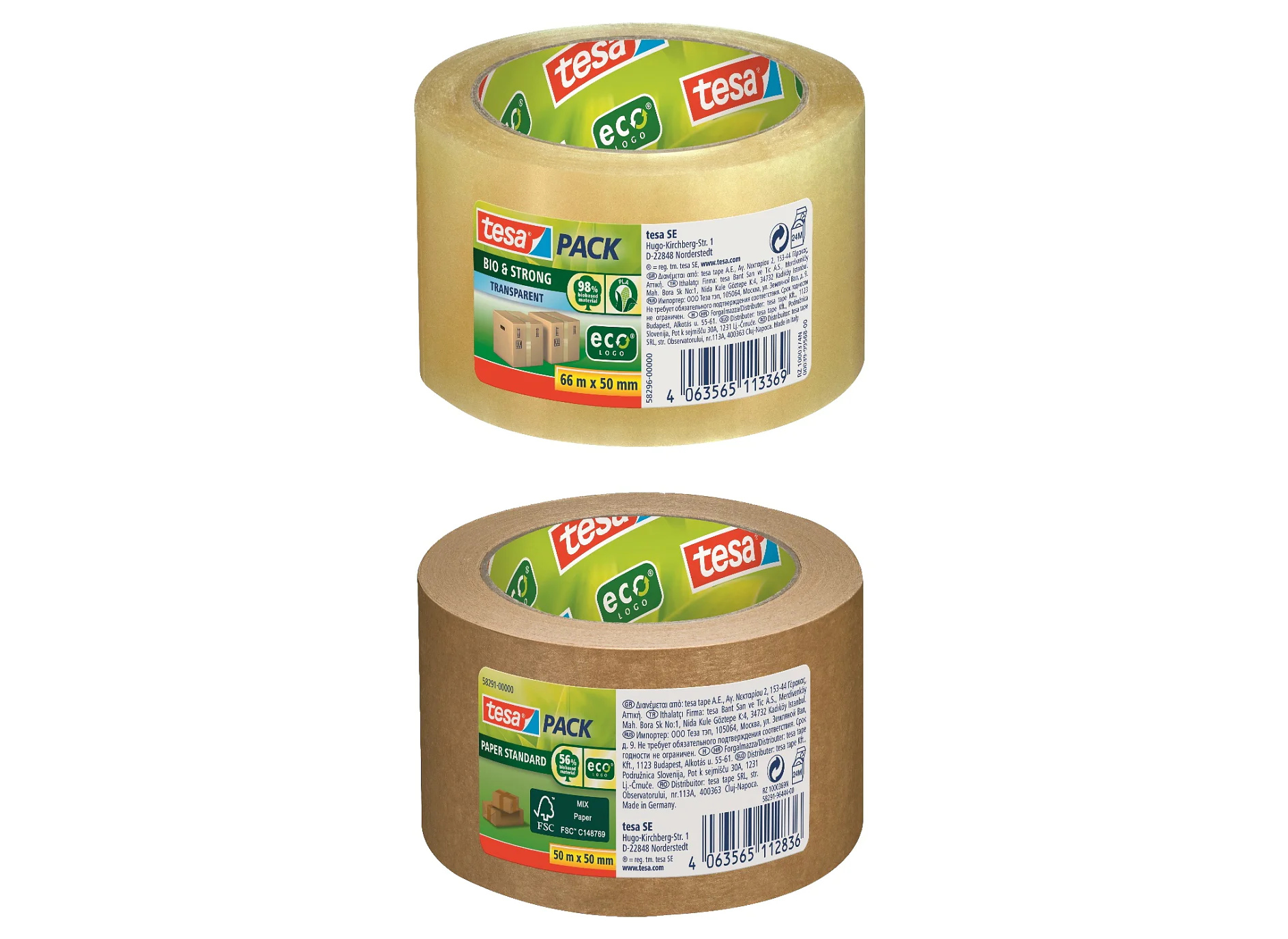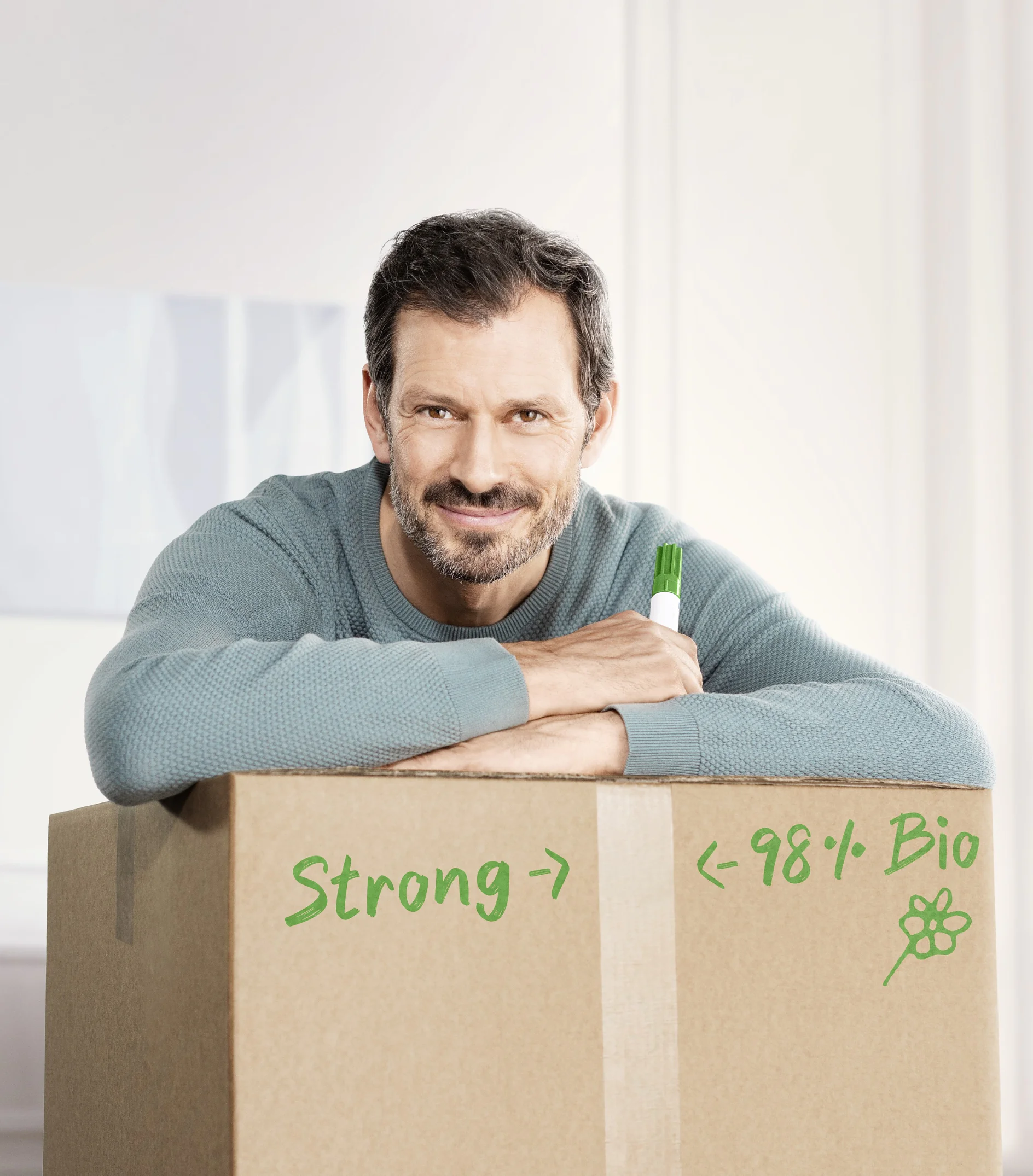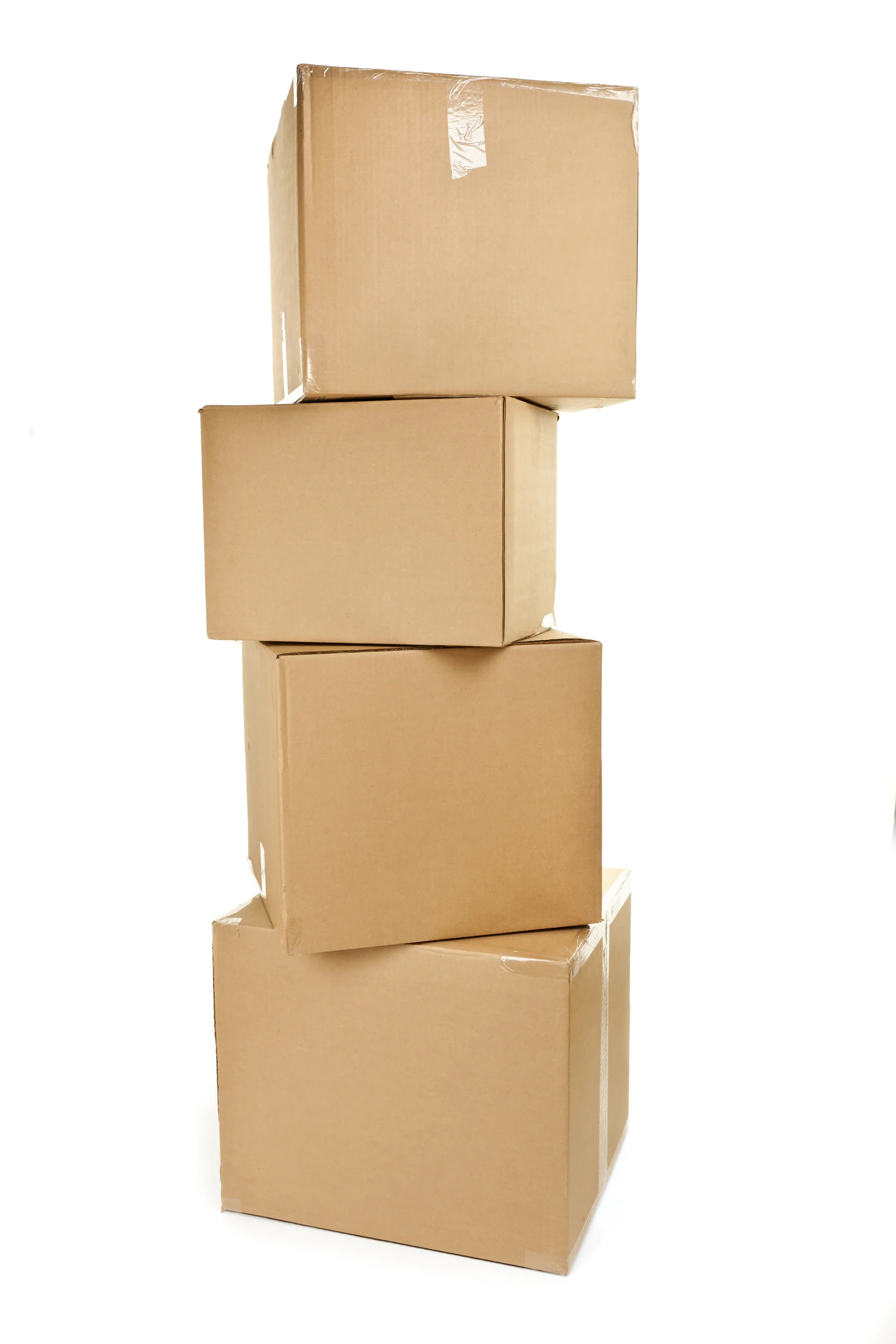Whether it is a wristwatch, an evening dress or a spare car part: Everything must be adequately protected for transport. Cardboard boxes of different types and sizes, wrapped with sturdy adhesive tape, have proven to be the number one packaging solution worldwide. The challenge: Since packaging tapes are disposed of after a single use, along the entire value chain they should have as little impact on the environment as possible.
All wrapped up! tesa relies on bio-based materials and recycling
Technologies
Wrap, pack, unpack: The wide world has turned into one big department store. In the wake of globalization and online trade, goods and gifts travel non-stop around the globe. Every year, and all around the world, more than 100 billion packages (that is over 3,200 per second) take a tour. Their constant companion: adhesive packaging tape that later ends up in the trash. A plus for environmental protection: tesa now offers two new sustainable tapes.
Last year, we as a company made "sustainable growth" a core component of our corporate strategy. For end consumers, commercial and industrial customers, this is visible in the fact that we are expanding our environmentally friendly product range. Since April, there are two new package tapes featuring the EcoLogo: tesapack® Bio & Strong and tesapack® Paper Standard. Bio & Strong offers a powerful adhesive strength with a bio-based carrier material. The other tape is paper-based and therefore extremely recycling-friendly. Both products are already available in professional stores and will be offered to private end consumers starting from August 1.


Made from corn starch and without any solvents
For the innovative tesapack® Bio & Strong, for the first time we used polylactic acid (PLA) as a carrier material, the basic raw material of which is plant-based corn starch. The advanced organic adhesive tape for cardboard boxes (up to 30 kilograms) has a 98% share of bio-based material. Caoutchouc and tree resin – naturally renewable raw materials – are used for the adhesive cement. The coating process is solvent-free, and the core of the adhesive roll is made of recycled paper. The packaging tape is also strongly adhesive and transparent. The high content of organic materials in tesapack® Bio & Strong has been confirmed by DIN CERTCO and TÜV AUSTRIA with top marks.
Together with cardboard into the wastepaper
The new tesapack® Paper Standard offers an ecological alternative when shipping parcels up to ten kilograms. The material for the paper-based adhesive tape comes from FSC®-certified forests and other controlled sources, distinguished by the FSC® Mix Label. In this product too, the adhesive cement is based on natural rubber (caoutchouc), the core of the roll is made of 100% recycled paper, and the coating is solvent-free.
tesapack® Paper Standard standard can be disposed easily together with the cardboard. Unlike many conventional tapes both paper backing and adhesive of tesapack® Paper Standard do not disturb the recycling process of the cardboard which has been tested and proven according to the INGEDE 12 testmethod. The tape is suitable for use on manual and automatic dispensers.
More sustainable solutions are in the pipeline
The new products tesapack® Bio & Strong and tesapack® Paper Standard are to be followed by other innovative adhesive tapes for packaging in the near future. "We strive to offer our customers true added value. The tesa products should not only convince in terms of quality and performance, but also with regard to their sustainability properties," explains Frank Riebau, Corporate Vice President tesa Consumer&Craftsmen. "As a strong brand, we like to take responsibility for making life (and bonding) a little better every day."

Packing like the pros
Glass broken, art print crumpled, small parts broken: when a shipment reaches the recipient in such desolate condition, it is extremely annoying. Sometimes the logistics provider is to blame if goods have been stored or transported improperly. But in many cases, the fault lies with the "packer". Nowadays, parcel sorting is highly automated, so that instructions such as "Attention, glass" or "Do not throw" are hardly taken into account. Therefore: Always use a sturdy shipping carton and not a thin-walled sales carton (e.g. for shoes)! When padding, the rule of thumb is: the heavier the goods, the stronger and more voluminous the padding material. For very heavy items, Styrofoam is a good choice; here, bubble wrap would not perform a protective function. This is ideal for lightweight items made of plastic or gift items. Corrugated roll cardboard or airbags (large-volume plastic air cushions) also come into question. Tissue paper can be compressed extremely hard. So you need a significant amount of it for the cushioning to work. It is similar with newsprint: if it is only roughly crumpled, huge air spaces are created in the paper balls, which are rapidly squeezed together during transport. The result is that the goods are flung back and forth. After the package has been sealed, a shake test is recommended. To do this, lift the package and shake it in all directions - even upside down. If you feel strong movements of the goods inside, the cushioning is insufficient. Please keep in mind that packaging materials such as Styrofoam should be reused. The next package is sure to come.
100 Milliarden
This "magic" mark in terms of packages shipped was broken for the first time in 2019. Or to put it another way: 3248 parcels made the journey every second. This is shown by the Parcel Shipping Index from Pitney Bowes. For comparison: in 2018, there were "only" 87 billion shipments. The Corona pandemic has intensified this trend. Logistics experts predict that global shipping volumes will increase to more than 220 billion parcels by 2026; some even forecast that the 300 billion mark could be broken.
